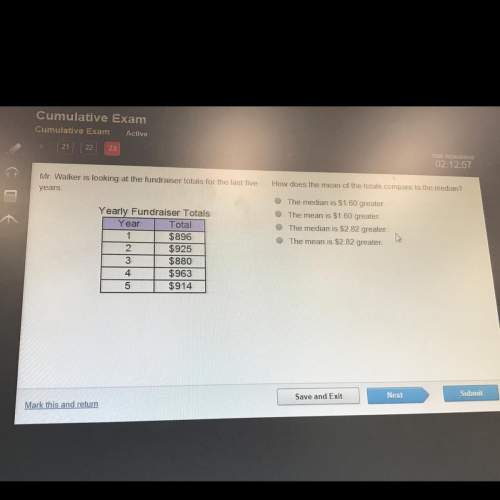
Mathematics, 04.07.2020 20:01 krystlelong29
g Let an denote the number of subsets of {1, 2, . . . , n} with no consecutive terms. Find a recurrence relation for an together with an appropriate number of initial terms

Answers: 2


Other questions on the subject: Mathematics

Mathematics, 21.06.2019 17:20, lpssprinklezlps
Consider the proof. given: segment ab is parallel to line de. prove: what is the missing statement in step 5?
Answers: 3

Mathematics, 21.06.2019 19:00, thegreentnt5025
1. which of the following algebraic equations is equivalent to ? x^n = a a^n = x a^x = n x^a = n 2. 16^1/4= 1/2 2 4 3. (-36)^1/2= -6 1/6 no real number 4. 8^2/3= 4 8 16√2 )^5/2= 7,776 1/7,776 no real number 6. m ^ the square root of a^2m simplified is: 7. the square root of 3^3 times the square root of 2 simplified and in radical form is:
Answers: 2

Mathematics, 21.06.2019 23:30, lilybear1700
The points (1, 7) and (0, 2) fall on a particular line. what is its equation in slope-intercept form?
Answers: 1
You know the right answer?
g Let an denote the number of subsets of {1, 2, . . . , n} with no consecutive terms. Find a recurre...
Questions in other subjects:



Mathematics, 19.04.2021 16:30



Mathematics, 19.04.2021 16:30







